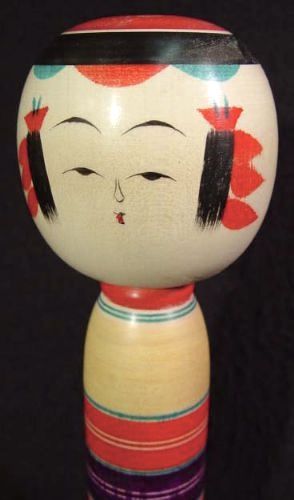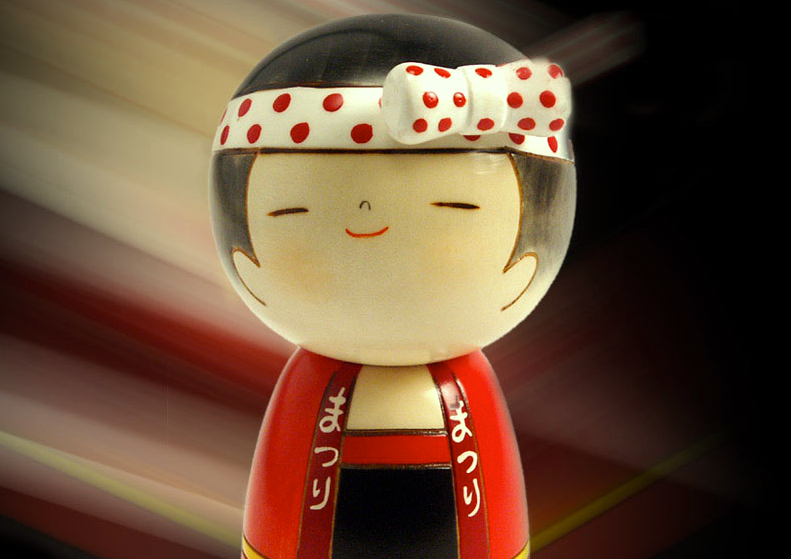Traditional Kokeshi is still produced for the main part only in the six provinces of the Tohoku region. All twelve design schools here exhibit distinctive features that allow experts to tell exactly where and usually by whom they were produced. The features of the prominent design schools are explained below.
Kokeshi’s oldest birthplace is in Togatta, Miyagi Province. Togat has trained many master classes wood craftsmen and played a key role in transferring Kokeshi construction techniques to other spa areas in the Tohoku area. Shinchi, Togatta Hot Spring and Aone Hot Spring in Togatta are the main production areas. Currently, this is the second richest Kokeshi production area after Naruko. Kiji-shi in Shinchi, which has a more ancient history than Naruko and Kiji-shi, were the people who made the first Kokeshi in Togat.

Flat wood and lacquer ware has a long history in Naruko Thermal Springs. Simple and tasteful, Naruko Kokeshi joined his head to his body with a tight-fitting goose neck that emits a “cry” (hence the name crying baby) when his head voice is turned. “Naruko” Kokeshi is very popular and has been made by many wood craftsmen. Naruko Kokeshi was developed in Naruko, one of the best spa resorts in the Tohoku region. Recent ancient records indicate that “Koukeshi” existed in 1862, and Kokeshi is thought to have begun to be produced in the late Edo period. Simple and tasteful in the Ko-Naruko (Ancient Naruko Kokeshi) Period (Meiji period – early Taisho period), and yellow on the body during the Ki-Naruko (Yellow Naruko Kokeshi) Period (Middle Taisho period – pre-war). The current Kokeshi has a gentle and charming expression.
Yajiro Kokeshi shares his origins with Togatta Kokeshi. Today in Yajiro, many people live as half-farmers and semi-craftsmen, sweeping the land from spring to autumn and trying to produce Kokeshi from late autumn to spring when the icy cool comes out of the river. Yajiro Kokeshi is mainly produced in the village of Yajiro, located about 1 km west of Kamasaki Hot Spring in Shiroishi-shi. The upper part of the head is painted with multicolored lines drawn in a beret cap pattern. Sometimes flowers or leaf patterns can be added.
Inspiration for Kokeshi Dolls comes from a number of sources. Sendai kokeshi is inspired by urban sources, while other Kokeshi dolls in the Tohoku area are inspired by mountain villages and spa resorts. Examples of kokeshi inspired by this hot spring are Sakunami Hot Spring and Imozawa in Miyagi Province and Yamagata-shi in Yamagata Prefecture.
The Hijiori design was developed in the Hijiori Hot Spring resort in Okura-mura, Yamagata Province. Since ancient times this resort has developed as a spa cure under the faithful influence of “Dewa Sanzan (three mountains in the Dewa area)”. The Togatta design was combined with the Naruko design to produce the original Hijiori Kokeshi. This design currently has the least number of craftsmen.
Nanbu kokeshi was developed from a toy with movable head, unpainted, pacifier shape. These babies are characterized by their simple pictures and moving heads.
Tsugaru’s head and body are one piece. Reflecting the influence of Naruko kokeshi, some have a wasp waist, while others have heavy shoulders.
